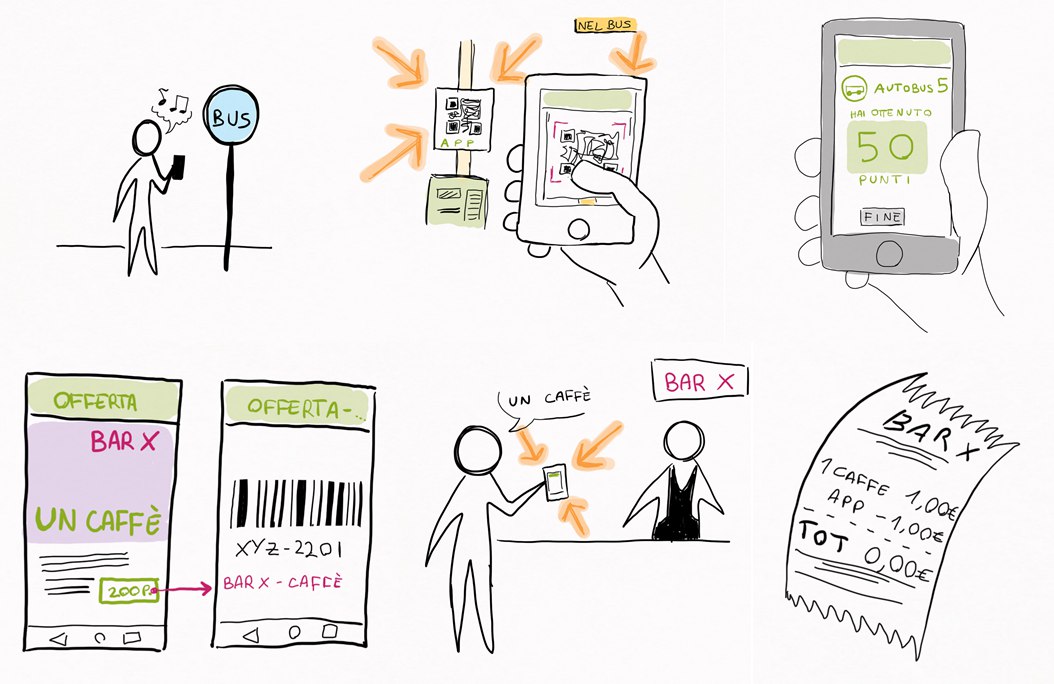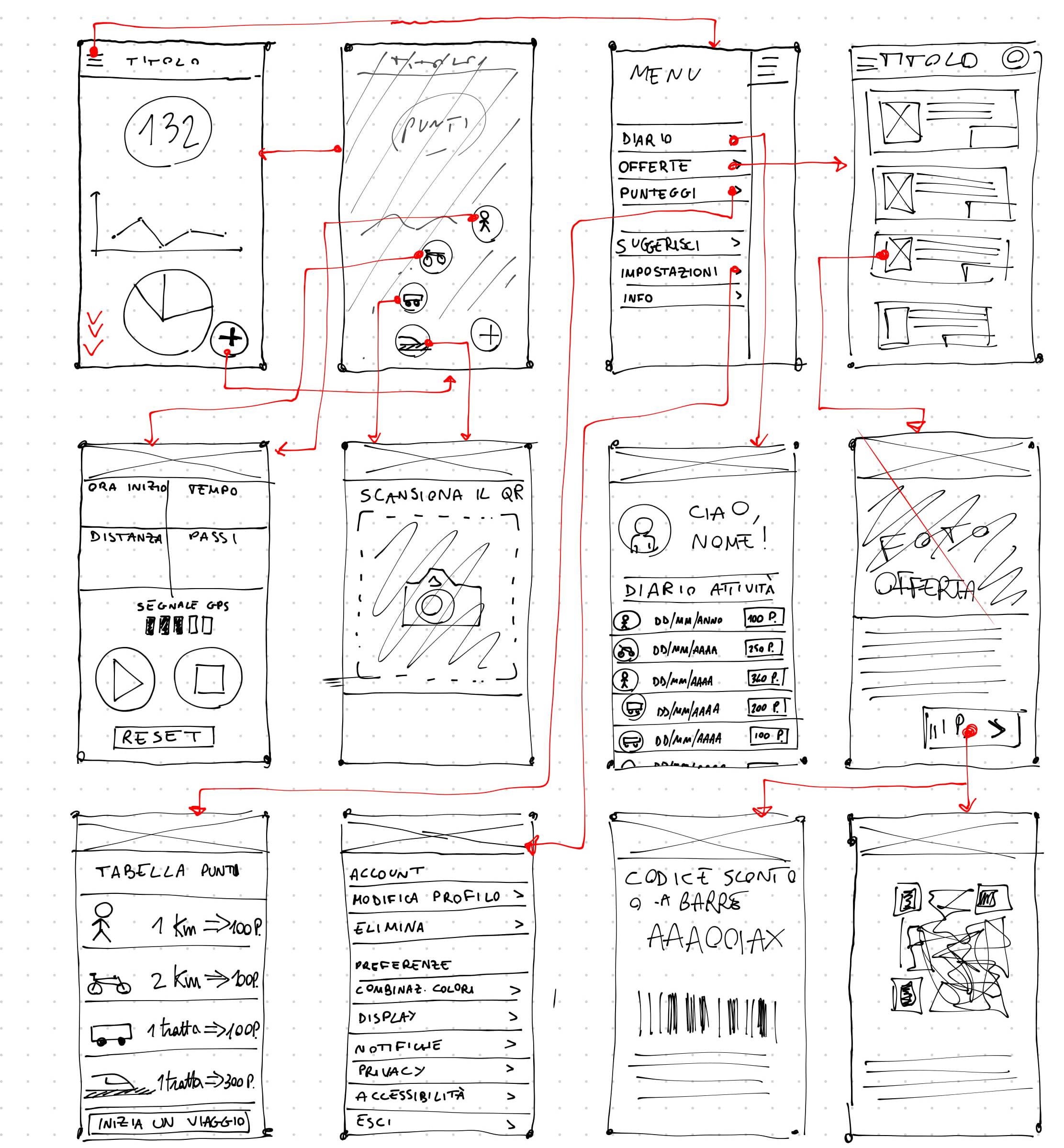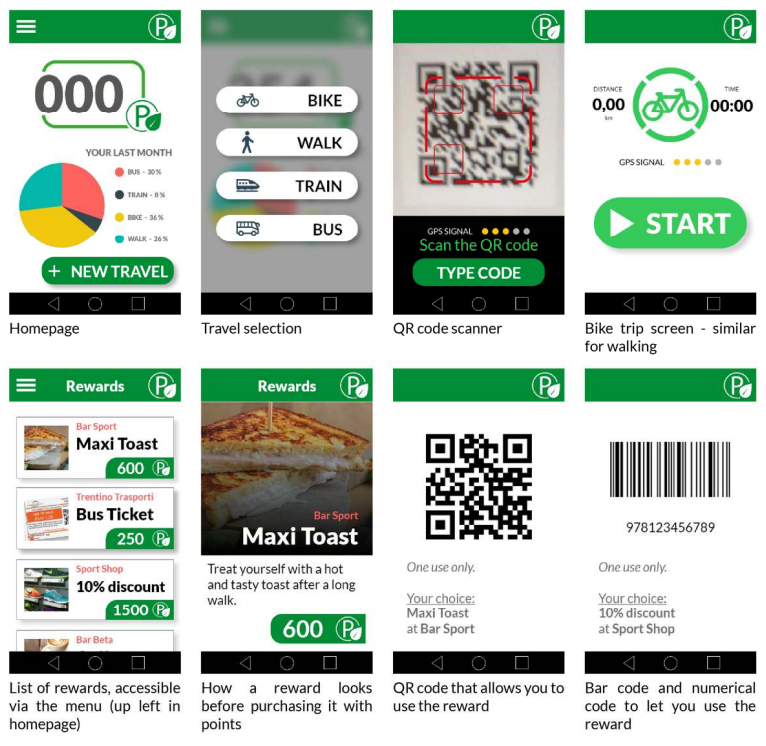Abstract
Sustainable mobility refers to the use of either non-polluting travel methods (e.g., walking or cycling), collective travel methods (e.g., bus, train, or car-pooling) or low-pollution travel means (e.g., electrical cars). The
goal of this project is to design a mid-fidelity prototype of a system that would encourage people to increase their use of sustainable mobility options, since most of times they're not the most suitable choice for everyday
life.
Users will record their sustainable movements in our system to earn points. They can exchange points with rewards.
There are several parties in this project, and each party has different needs. Our goal was to see how various types of people, from the young student to the old lady, deal with the use of sustainable means of transport in
everyday life, in order to understand what they liked and disliked about it.
We decided to focus on the Trentino region: this area has few big cities and inhabitants of the mountain valleys need to reach them both for working and leisure purposes. For this reason, we were able to work with a good sample
of people, with many different needs. This allowed us to have a deeper understanding of what the real problem is and a more focused view on the possible solution that we're going to describe in this report.
Relying on the interviews we conducted, our aim was to understand how we could encourage a larger number of people to prefer using a sustainable transportation method rather than their private car or motorbike. Although there
are some critical flaws about sustainable mobility from the users' point of view, we think we could find a good compromise: all the people need is a good reward for their good action towards environment, and that's what
our project is all about.
Our idea
We focused on daily movements of people only in the area of Trento. Our system will award users with points. Users may redeem them from bus and train tickets, and bike sharing reservations, since everything is associated with
a unique code.
Points will be awarded based on the mean of transport used. We provide some examples:
Bus: 10 points/km
Train: 10 points/km
Bike: 13 points/km
Walk: 15 points/km
Maximum points per day: 150
We decided to assign points based on the means' sustainability. Riding the bike awards the user less points than walking, even though sustainability is the same, because you can cover longer distances. Bus and train give the
same points per km because they limit CO2 emissions in the same quantity.
When travelling by train or bus, the system starts the GPS tracking after scanning the QR located on the vehicle. Via GPS the system understands when you leave the bus/train and gives you the points.
When walking or riding the bike the user must manually start and stop the GPS tracking in order to obtain the points. The tracking stops automatically if the users forgets about it because it can see if he/she is stationary
for too long or if he/she is no longer near a railroad or a bus path.
Use case scenario

Low-Fidelity Prototype

Medium-Fidelity Prototype
